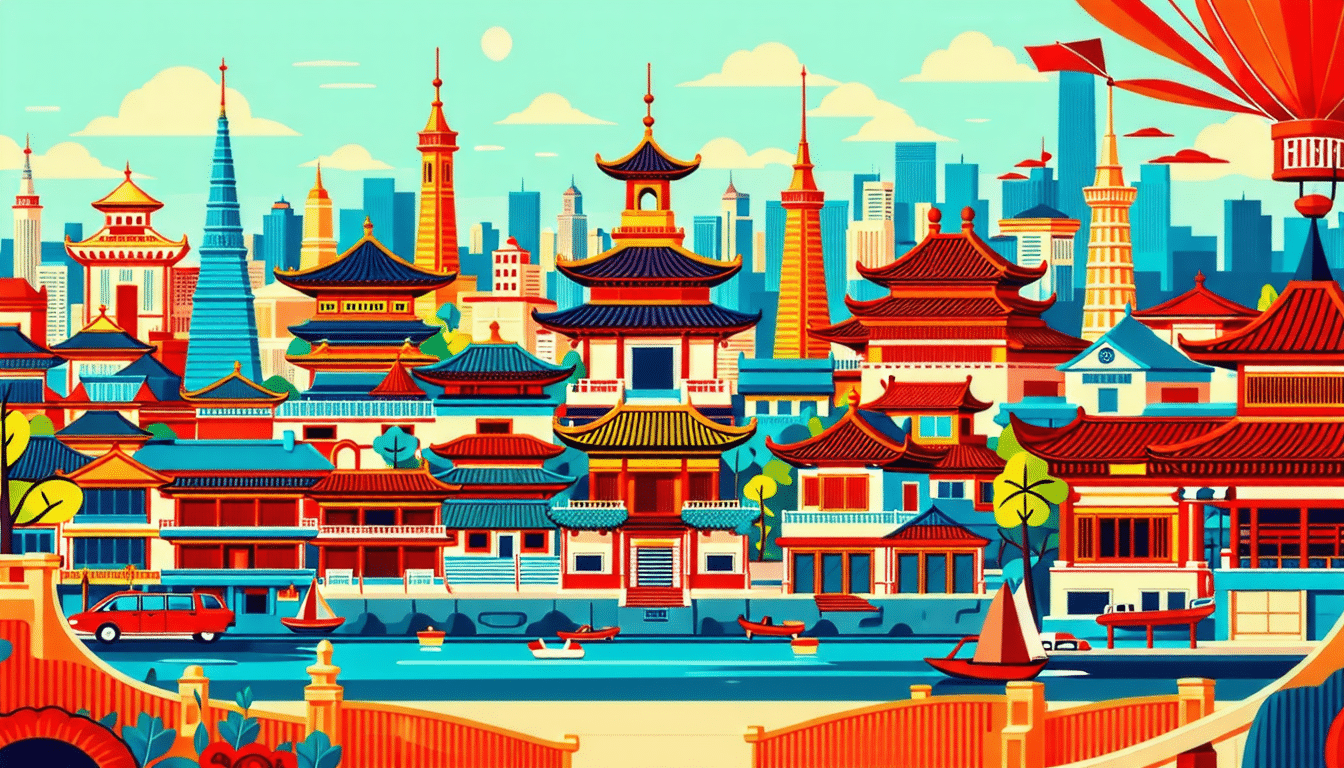Immerse yourself in a fascinating journey where East meets West! Asia, a land of contrasts and traditions, is home to astonishing replicas of European cities. Between fascination for otherness and talent for reproduction, discover the astonishing symbiosis between these two worlds. Immediate boarding for an exploration of the twists and turns of these duplicated cities, where exoticism and familiarity mingle.
Architectural replicas in Asia: a trip without leaving your country
Explore Asia can sometimes feel like diving into the pages of a European tourist guide. Imagine strolling through a French village in Da Nang, or marveling at a replica of the Eiffel Tower in China. But why are there so many replicas? For the domestic tourists, it’s the opportunity to explore the world without leaving their country. A unique way to discover distant cultures while remaining within familiar borders.
There are numerous examples: a “tropical Colmar” in the heart of the Malaysian jungle, a miniature version of the Netherlands in Nagasaki, Japan, or the red pubs and telephone booths of Thames Town, near Shanghai. These sites take their visitors on a journey through ideal European settings, immediately familiar and yet so exotic.
A legacy of duplication
There duplication is not a new phenomenon for China. Dating back several millennia, this practice was already used by Qin Shi Huang, unifier of the Chinese Empire, to create replicas of conquered palaces. Today, this tradition known as “duplitecture”, mixing “duplication” and “architecture”, is omnipresent.
This passion for copies stems from a desire to move away from the communist and Soviet style, drawing inspiration from Europe to project an image of success. Architectural replicas have thus become a way of enhance the original and to show talent, far from being perceived as kitsch or illegal as in the West.
Ambitious projects and tourist curiosities
Tianducheng, the copy of Paris 30 km from Hangzhou, is an excellent example of this phenomenon. Partially carried out as part of the “One city, nine towns” project, it aimed to create nine large districts, each evoking a European country. Although this replica did not meet its initial population goals, it became a tourist curiosity popular, attracting not only Chinese but also foreign tourists.
Reinvented tourist destinations
Dedicated theme parks like Huis Ten Bosch in Japan and Ba Na Hills in Vietnam are also examples of this trend. They allow visitors to get a glimpse of the world without obtaining a passport. These places, designed to be tourist destinations in their own right, contribute to economic recovery by remaining competitive in the global tourism market.
Local tourism and heritage preservation
THE fake cities also allow a sort of modern “Grand Tour” for the Chinese, making European trips possible without leaving their homeland. Reducing the environmental impact of long-distance travel, they represent a new trend in favor of local tourism. In just a few days, tourists can travel around the world visiting these replicas.
Also, these replicas play a crucial role in the preservation of heritage. For example, the Lascaux cave in France has multiplied facsimiles to preserve this treasure while continuing to present it to the public. Venice, threatened by rising waters and other natural hazards, will continue to exist through its copies scattered across the four corners of the globe.
A day in a French village in Vietnam
In Vietnam, the mountainous region of Ba Na Hills offers a replica of a French village, providing a unique experience for visitors. Although its “Disneyland” atmosphere can be off-putting at first, curiosity often takes over. With station names like “Bordeaux” or “Marseille,” visitors wander among the typical replicas, enjoying warm croissants while admiring statues of famous French figures.
Faced with this accumulation of clichés, the French visitor may initially smile, but he often emerges proud to see his culture so admired on the other side of the world. This idealization reminds us of the extent to which European influence endures and fascinates.









